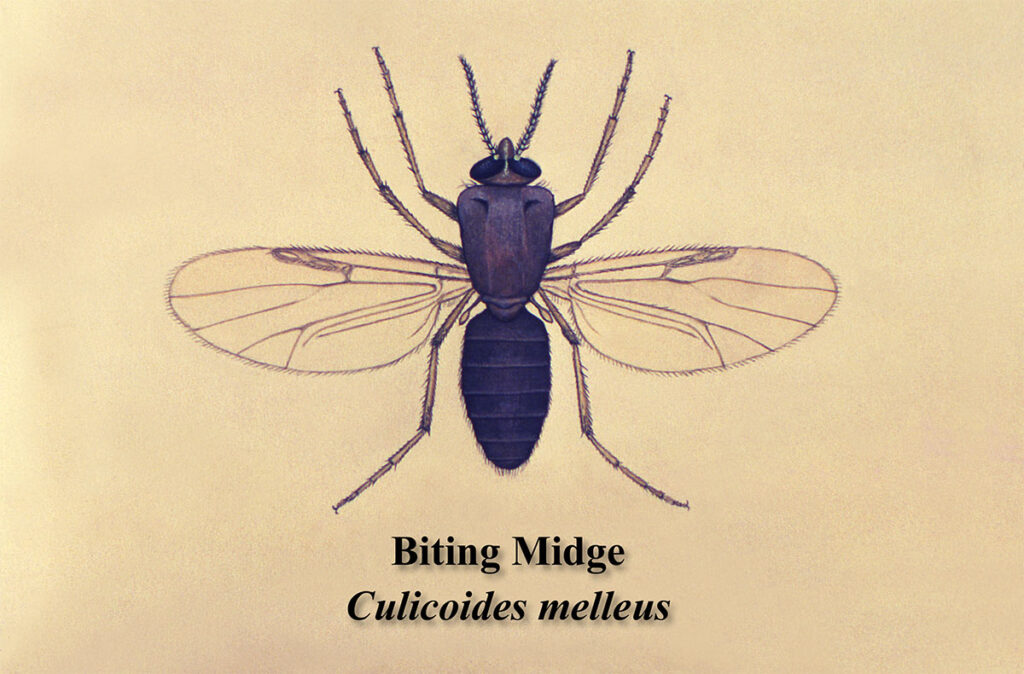A new study published in the July 2025 issue of Emerging Infectious Diseases offers the most robust estimate to date of the incubation period for Oropouche virus (OROV) disease, an emerging arboviral infection that has surged across the Americas. Conducted by researchers at the U.S. Centers for Disease Control and Prevention (CDC) in collaboration with the GeoSentinel Network and international partners, the study analyzed nearly 100 travel-associated cases of Oropouche virus to better define the timing of symptom onset following exposure.
The research comes in the wake of a major Oropouche outbreak that began in the Brazilian Amazon in late 2023 and spread rapidly across the region, including into non-endemic areas. More than 16,000 cases were reported by the end of 2024. The disease, primarily transmitted by biting midges (Culicoides paraensis), has also been linked to suspected congenital transmission and the possible presence of virus in semen, raising concerns about sexual transmission.
Key Findings: Incubation Period Defined
The researchers used data from 97 symptomatic, travel-associated Oropouche cases—primarily among travelers returning from Cuba to the United States and Europe—collected between 2024 and early 2025. By applying log-normal survival modeling to interval-censored data, they estimated:
- Median incubation period: 3.2 days (95% CI: 2.5–3.9)
- Range for 95% of cases: 1.1 to 9.7 days
- Range for 99% of cases: Up to 15.4 days
Notably, 88% of patients developed symptoms within seven days of exposure. The study offers a wider and more precise estimate than earlier reports, which were largely anecdotal or based on historical outbreaks lacking detailed exposure data.
Public Health Relevance: Distinguishing Imported from Local Transmission
Understanding the incubation period is essential for distinguishing between imported and locally acquired infections—particularly critical in regions where competent vectors exist. For example, if a patient presents with Oropouche-like symptoms more than two weeks after returning from a travel destination, local transmission or alternative modes (such as sexual or congenital transmission) may need to be considered.
Moreover, accurate incubation data can guide when to declare an outbreak over. Based on this study’s findings, authorities might consider using a five-week window (twice the estimated maximum human-vector incubation period) of no new cases as a benchmark for containment.
Diagnostic and Clinical Implications
Oropouche virus presents with symptoms that overlap significantly with other arboviruses such as dengue, Zika, and chikungunya—acute fever, headache, myalgia, and rash. However, the newly defined median incubation period of 3–4 days is shorter than those typically seen with dengue (5–7 days), chikungunya (3–7 days), or Zika (6–7 days).
Clinicians are advised to maintain a high index of suspicion for Oropouche in patients with compatible symptoms within 10 days of travel to affected regions, particularly Cuba. The study also emphasizes the importance of accurate patient histories, given that relapse occurs in up to 70% of Oropouche cases.
Implications for Health Security and the National Interest
Oropouche virus is no longer just a regional concern. With hundreds of cases now identified in returning travelers and sustained transmission in parts of the Caribbean, the virus poses a potential threat to health security in non-endemic regions with the right ecological conditions for transmission. Understanding and monitoring incubation periods is vital not only for clinical management but also for detecting possible autochthonous transmission in the United States and elsewhere.
Given the growing movement of people and goods across borders—and the established presence of competent vectors in some parts of the U.S.—strengthening surveillance and outbreak modeling for OROV is a prudent investment in national biosecurity.
Sources and Further Reading:
Emerging Infectious Diseases: Estimation of incubation period for oropouche virus disease among travel-associated cases
World Health Organization: Oropouche virus disease
Current Research in Microbial Sciences: Re-emergence of Oropouche virus as a novel global threat
Tropical Diseases, Travel Medicine and Vaccines: Addressing the emerging threat of Oropouche virus: implications and public health responses for healthcare systems


